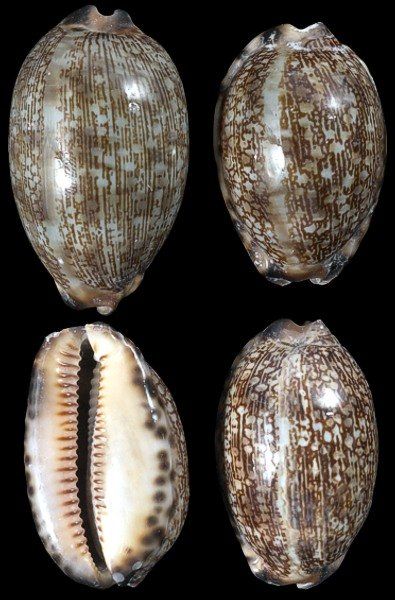One Arabic Cowrie shells measuring 1.25 to 2.25 inches ****
One Arabic Cowrie shells, measuring 1 1/4 to 2 1/4 inches
Orders usually process within 2 to 5 business days.
Email us at ja1@mindspring.com Make Your Selections and Shipping Preference. We Will Email You the amount of the Shipping Cost. When you receive the shipping cost go back into Shells of Aquarius and click into Purchase Shipping Label. There you will find UPS or USPS. Click into the option you decided on and make your payment. Your order will ship when shipping payment is received.
Mauritia arabica common name Arabian cowry
This species grows on average to about 3 inches. The Arabic cowry has been known to grow to near 4 inches (REF: Poutiers, J. M. (1998). Gastropods The living marine resources of the Western Central Pacific Volume 1).
The shell outline is oblong or nearly elliptical. The spire is barely distinguishable dorsally. Common with other Cypraeidae, the aperture of the shell is very narrow, and relatively long. Both the inner and outer lips are ornamented with arrays of small teeth. The dorsal side of the shell is convex or bent, and never depressed. The dorsal mantle groove (the line or area where the two mantle flaps meet when they are fully extended) is dissimilar to the shells general color pattern, and thus easily perceivable. The lateral margins are calloused, mainly towards both the posterior and anterior ends. The ventral side of the shell is typically flattened, and sometimes slightly concave (REF: Poutiers, J. M. (1998). Gastropods The living marine resources of the Western Central Pacific Volume 1).
The Arabic shell surface is notably effulgent (shiny), as if it had been deliberately polished. The color is generally cream to light fawn dorsally, with shades of brown. The ventral side of the shell is colored cream to grey. The labral teeth are reddish brown and white towards the columella. The common name Arabian cowry is based on a dense and irregular pattern of thin longitudinal brown lines which are sometimes interrupted by empty spaces, giving an appearance that is considered to be similar to that of Arabic script (REF: Poutiers, J. M. (1998). Gastropods The living marine resources of the Western Central Pacific Volume 1).
Mauritia arabica and its close relative Mauritia eglantina have very similar shells which can be easily confused. M. eglantina has a dark blotch or spot near the spire (M. arabica lacks this blotch) and generally has a narrower outline and more elongate-cylindrical shell form. (REF: Mauritia eglantina". Kwajalein Underwater)
Mauritia arabica are found in the Indo-West Pacific, from East and South Africa (including Madagascar, but not the Red Sea nor the Persian Gulf), to the eastern Polynesia. It spreads north to Japan and south to New South Wales, Australia (REF: Poutiers, J. M. (1998). Gastropods The living marine resources of the Western Central Pacific Volume 1).
This sea snail dwells under boulder and stones, and also shelters in caverns of the outskirts of coral reefs. It lives in low intertidal zones to shallow sublittoral depths. Mauritia arabica are mainly nocturnal.
Mauritia arabica is collected for food by locals in many areas (REF: Poutiers, J. M. (1998). Gastropods The living marine resources of the Western Central Pacific Volume 1).
Scientific classification
Domain: Eukaryota
Kingdom: Animalia
Phylum: Mollusca
Class: Gastropoda
Subclass: Caenogastropoda
Order: Littorinimorpha
Family: Cypraeidae
Genus: Mauritia
Species: M. arabica
Binomial name: Mauritia arabica
(Linnaeus, 1758)
